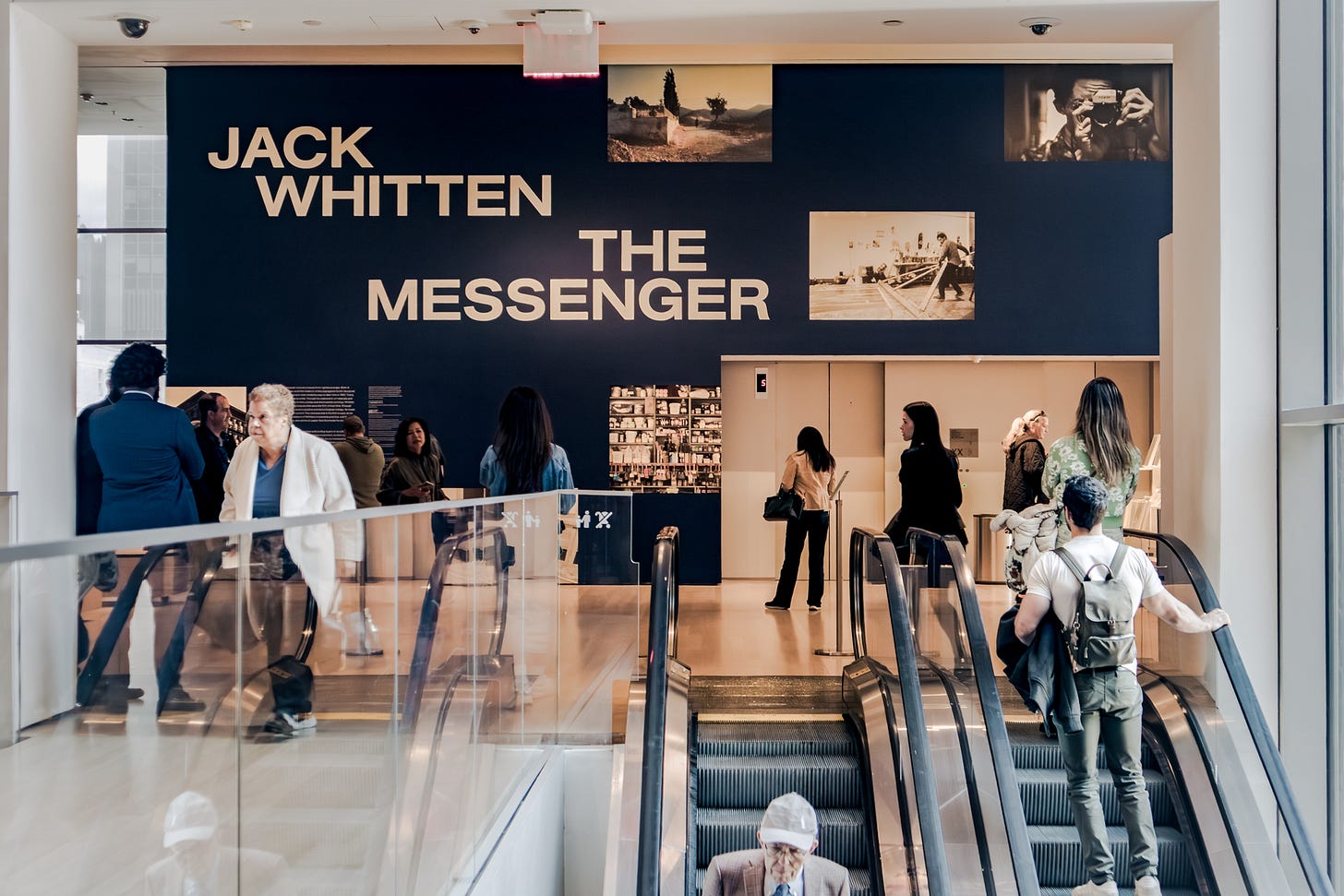Two nights before I stepped into Jack Whitten: The Messenger at MoMA, I watched Diana Ross make her entrance on the Met Gala red carpet. She didn’t walk so much as emanate—gliding with the kind of grace that only decades of work can distill. She wasn’t a memory from the past but a living monument to endurance, determination, and the brilliance that comes from sustained effort. It wasn’t nostalgia that caught me—it was the authority of someone who never stopped showing up. So when I entered Whitten’s universe, I felt it again—that same current of steady, persistent reach. His work, like Ross’s, isn’t just about beauty or spectacle. It’s about discipline. It’s about the years in the studio, where physical labor meets intellectual rigor, where curiosity keeps you moving—even when no one’s watching.
Moving through the exhibit, I didn’t feel like I was circling a single theme. I was shifting between points of energy. The show is installed in MoMA’s familiar white cube: clean, bright, neutral. But Whitten’s works don’t just hang against those walls—they press beyond them. They hover. They radiate. The space seems to lean toward the work. The light stretches to meet it. Whitten wasn’t offering a display—he was building a world. I moved through it, following the pull of each new piece like it had its own gravitational field.
What struck me most was the vastness of that world: Whitten’s genius wasn’t confined to his tesserae paintings—the gleaming mosaics made of individually cast acrylic tiles. His range of materials was remarkably varied: toner and graphite, carved wood and bone, marble, paper, glass, nails, fishing line—each imbued with new life in his hands. His sculptures, shaped by influences from Africa, the ancient Mediterranean, and the American South, carry the weight of memory, migration, and place. Even his writings—like the handwritten letter displayed under glass, where he asked a collector to trade supplies for artwork—felt like sketches for something still taking shape. In the letter, he mentioned he had run out of paint but was “dangerously close to something [he did] not understand.” It didn’t read like a plea. It read like a durable belief—a faith that if you keep showing up, something will eventually reveal itself. Maybe not now. Maybe not until long after you’re gone.
I felt that commitment most keenly in the Black Monoliths series—the section where those works were presented hit differently. I probably spent the most time there—I didn’t want to leave. It didn’t feel like another stop on the tour; it felt like stepping inside a pressurized chamber, a silent, floating studio tucked somewhere on the far side of the moon. The walls weren’t gallery black—they were cosmic black, the kind that swallows sound, light, and memory. And from somewhere above, John Coltrane’s horn drifted in, curling through the air like a signal still making its way across the galaxy.
Each painting was a dedication, a transmission, a message launched outward toward Black icons—Muhammad Ali, Jacob Lawrence, Ornette Coleman—names that burn brightly across time. Whitten’s tesserae—thick, brilliant shards arranged like fragments of distant terrain—didn’t just form portraits. They created star maps, coordinates charting a vast and still-expanding galaxy of Black brilliance.
This wasn’t just a room. It was a Black space—not merely filled with Blackness, but shaped by it. A space that moves to its own frequency, obeys its own physics, and doesn’t slow down to explain itself.
At the Met Gala, Diana Ross didn’t hurry to meet the moment—she was the moment. Whitten’s work carries that same steady composure, confident in its own pull, certain you’ll come around when you’re ready. And when you do, it’s there—radiant, complex, abundant—proof of what’s possible when you keep showing up, build across years, and trust what time can make.
b♥©






This is a wonderful review of an artist I was happy to call a friend, and one who modeled for me as an artist all of the things you call out here.
great review